The Bugs in My Life
I’ve tried to ensure that “Specimens,” my exhibit of extinct, endangered, and overlooked animals includes creatures of all different kinds.
There are mammals (“Tickled Pink,” “Dixie Dingo Dreaming,” “Golden Temple of the Good Girls,” “Samuelsaurus Rex,” “Fructos“), reptiles (“Crocodylus Smylus“), amphibians (“Million to One“), birds (Chloe the marabou stork), and fish (“Gombessa“).
I haven’t neglected the insect world. My quilts “Fire Beetle” and “Exuberance” represent their colorful and many-legged family. As I have described before (“Quilt Stories: Bugging Out”), these two quilts were created after “Samuelsaurus Rex,” the quilt of my young son in which I used only leftover scraps from previous projects. In that quilt, I used the scraps pretty much as I found them, as is, same size same shape.
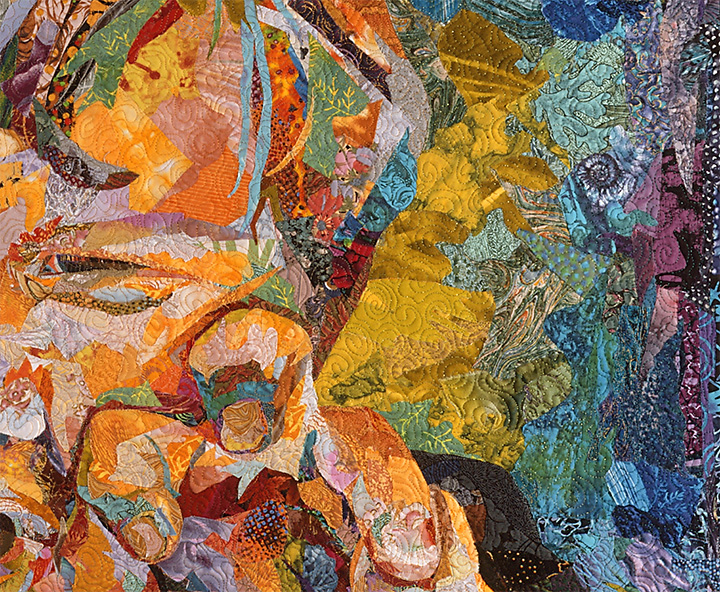
“Fire Beetle” and “Exuberance” came at a time when I was trying to loosen up artistically. I had been creating lots of small quilts—framed fish quilts, mostly—for sale at a reasonable price-point where more people could afford them. I felt the itch to do bigger and more challenging quilts in a style that was freer and spontaneous.
The boxes of scraps collected from all those previous quilts gave me just the inspiration I needed. While I don’t always use this technique (although I am currently working this way with Chloe the marabou stork), “Samuelsaurus Rex” then “Fire Beetle” and “Exuberance” changed the course of my quilting, giving me skills to move on to such works as “Tickled Pink” and “Polka Dodo.”
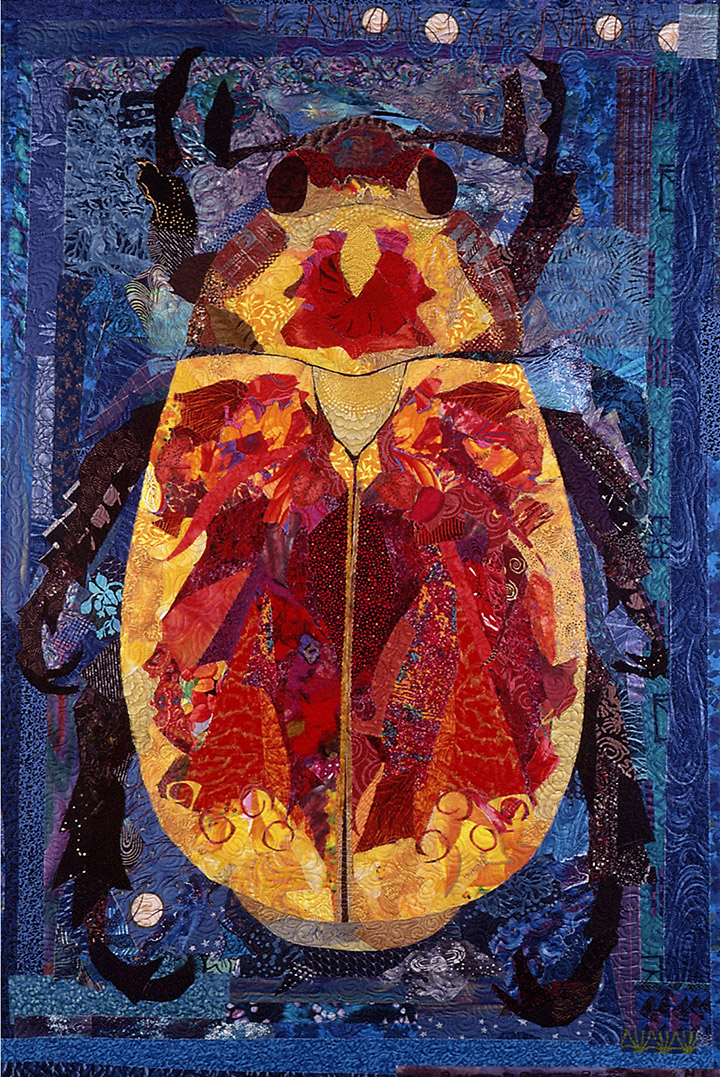
All You Need Is … Beetles
As I was casting about for subject matter to use this new “scrappy” technique on, I remembered that along with the small fish quilts, I had done a whole bunch of small beetle quilts as well. Then I read that, according to one African creation myth, during the creation of the universe a giant scarab rolled the leftovers into a ball, forming the earth. The connection was too perfect to ignore.
I decided I should give beetles the same treatment as “S. Rex,” only on a larger scale than my previous bug quilts. “Fire Beetle”—along with its companion pieces, “Life in the Leaves” and “Rolling Up the World”—was created completely from the accumulation of scraps from years of making my collage quilts.
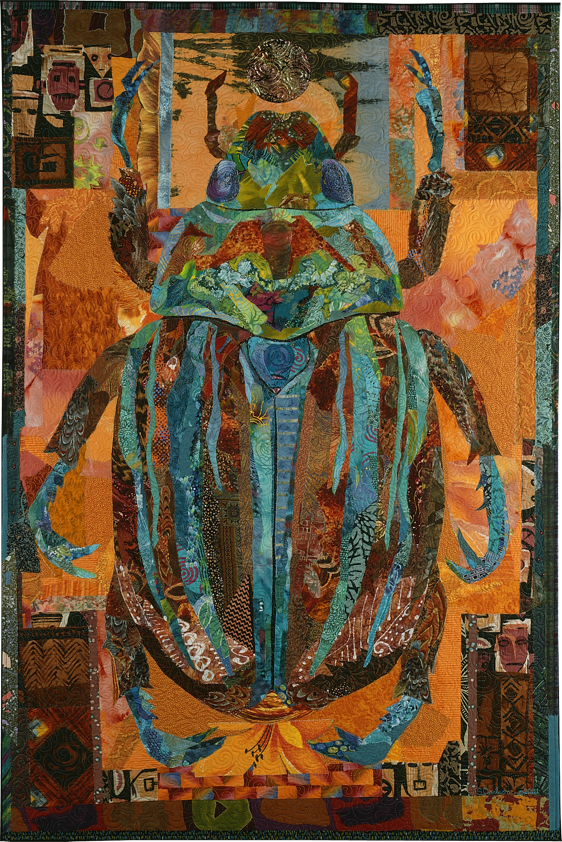
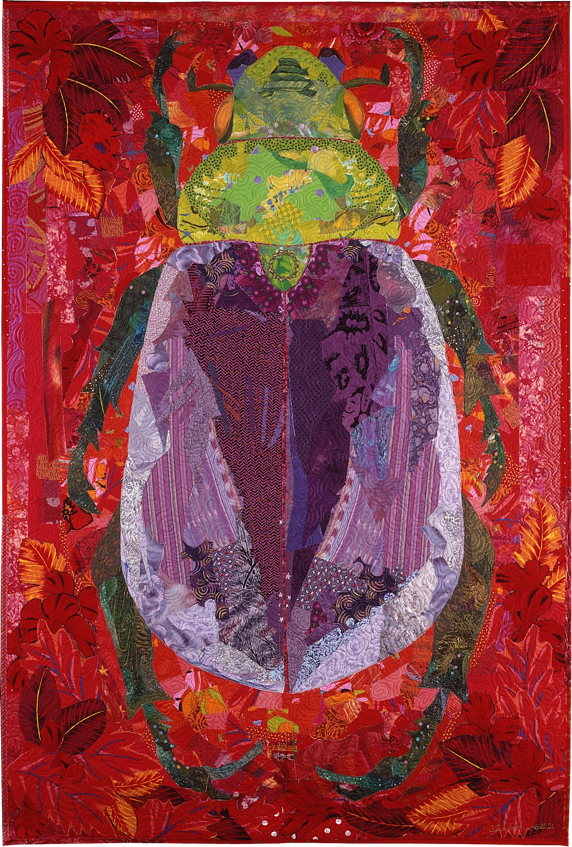
Now I look back on those hundreds of smaller quilts with fondness and gratitude. While making them, I was in essence educating myself. They were what are called studies in art classes. I trained my eye to see value and shape. I trained my hands to use scissors the way others use a pencil or paintbrush. If not for those little quilts, the big ones might never have happened. Certainly, they wouldn’t have been the same.
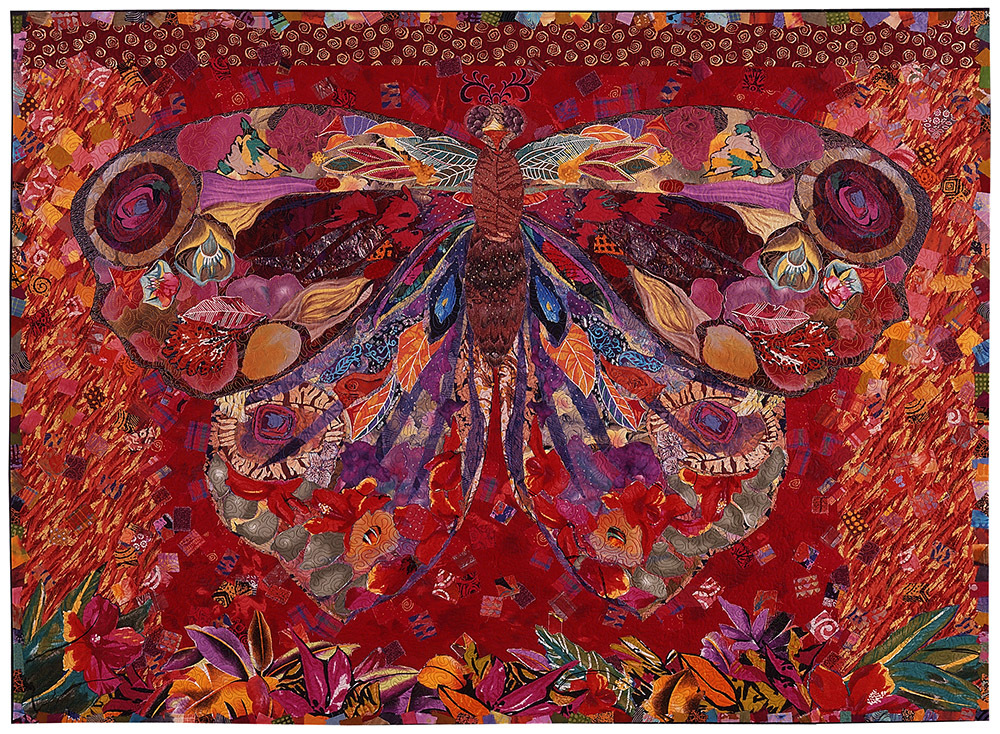
Taking Flight
I like to give myself artistic challenges. Using scraps is one challenge. “Samuelsaurus Rex” was also a study in value. I purposely ignored color, instead concentrating solely on the dark or light of the fabric to create shape. However, the scarab beetles deal especially with complementary colors, a color strategy I often fall back on.
When I decided to make a butterfly with scraps, I thought to try something different, making it only partly scrappy.

On all these insect quilts, I was trying out a new way to bind the edges. Instead of creating a traditional stitched binding from a single piece of fabric, forming a frame around the quilt, I wrapped and glued the binding. This had the effect of extending the collage piecing right to the edge (and around to the back) of the quilt. For the butterfly I felt this lack of boundaries was especially appropriate.
I also have to admit that “Exuberance” was a UFO (UnFinished Object) for a couple of years because I couldn’t decide how to complete the background. What I had felt stagnant to me. Then a friend gifted me a large pile of rough-cut inch by inch squares of fabric, kind of like big confetti. I arranged and glued those little squares onto the background and liked how they added unexpected variation behind the butterfly, giving the appearance of movement and fluttering wings. To carry that theme through I wrapped and glued the binding with the one-inch squares, taking longer than a traditional binding would have, but an appropriate choice nonetheless.
Specimens
Remember how I said that the animals in my “Specimens” show were all extinct, endangered, or overlooked? Well, while there are many extinct insects, not many are well known. There are lots of endangered ones, one of the most notable being the Monarch butterfly. But mostly, it seems to me, that insects fall into that last category: overlooked. It seems unfair that the animal kingdom whose species outnumbers all the others by ten to one should be so easily disregarded, especially when they are so crucial to the health of our world.
But I am also appreciative of their aesthetic value: their beauty of form and color. I hope that by featuring them in my collection that viewers will consider them more closely, and perhaps with more affection.
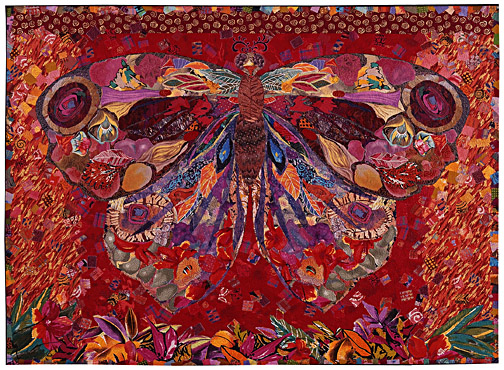
Best energized thoughts going your and Tom’s ways as you complete the overhaul and Chloe! Enjoy your Houston celebration! So well deserved! I had a fabulous birthday week with you, Karen ???
Best energized thoughts going your and Tom’s ways as you complete the overhaul and Chloe! Enjoy your Houston celebration! So well deserved! I had a fabulous birthday week with you, Karen 💕ðŸ¶ðŸ˜Ž
Best energized thoughts going your and Tom’s ways as you complete the overhaul and Chloe! Enjoy your Houston celebration! So well deserved! I had a fabulous birthday week with you, Karen 💕ðŸ¶ðŸ˜Ž
Looking forward to seeing your new space!
Looking forward to seeing your new space!
Looking forward to seeing your new space!